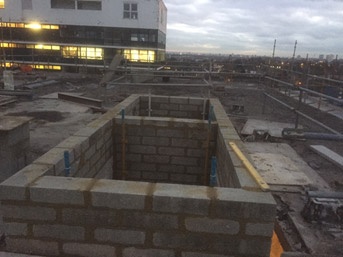So how would you build Poes wall in concrete block? the way i suggested is the way every liftshaft/stairwell and countless retaining walls i have built in 37 years has been built(as specified). As for saying its harder, for a novice it would be easier to build the way i said, and using extra mortar at least there will be no voids in wall or ties neededNot like that it isn't - that's the numpty way. That gives a very slender height to length ratio which makes each block more prone to cracking.
If blocks are to be laid flat, then they should be laid one on top of the other for two courses, and then bonded and so on.
But even so there is no advantage in laying blocks flat - its harder, takes more time and uses more mortar.

One example of many built by numpties
Last edited:



